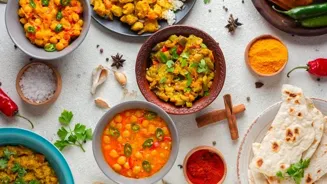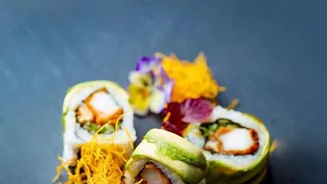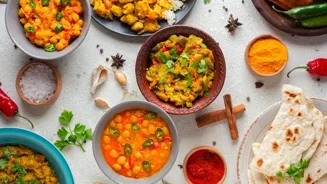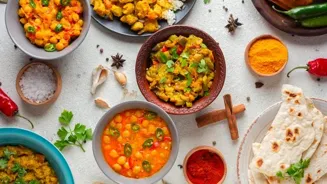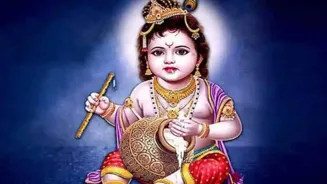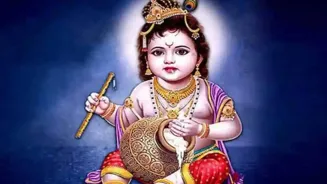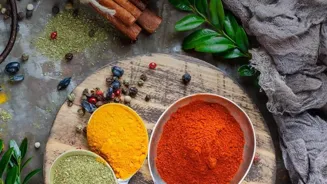Discover the Cultural Significance of Food Offerings in India - A glimpse into spirituality, customs & divine connections
India, a land of diverse cultures and traditions, holds food in a very special place.
It's not just about nourishment; it's deeply intertwined with spirituality and customs. Food offerings, or 'Bhog', as they are often called, are a common sight in temples, homes, and during festivals.
These offerings are a way of expressing gratitude, seeking blessings, and connecting with the divine. Understanding the cultural significance of food offerings gives us a peek into the rich tapestry of Indian beliefs.
It shows how food transcends its basic function and becomes a powerful symbol of faith and devotion.
Ancient practice of offering food to deities for divine blessings
The practice of offering food to deities is ancient. It finds mention in the Vedas and other religious scriptures. Over time, it has evolved into various forms, each specific to a region or a deity. The core idea remains the same: to present the purest and most delectable food to the divine.
This offering is made with utmost reverence and devotion. The belief is that the deity partakes of the essence of the food, which is then returned to the devotees as 'Prasad', a blessed offering.
This 'Prasad' carries the divine blessings, and consuming it is considered auspicious and brings good fortune. Different deities have different preferences, and the offerings are tailored accordingly, reflecting the local produce and culinary traditions.
Cooking for the divine is a sacred, ritualistic act of worship
Preparing food for the divine is a sacred activity in itself. It involves meticulous adherence to purity and hygiene. The ingredients are carefully chosen, and the cooking is often done by designated individuals or family members who are considered to be of a high spiritual standing.
The kitchen or the space where the food is prepared is often sanctified, and the cook might observe a fast or maintain silence during the process. The recipes are often traditional and passed down through generations.
Each dish is prepared with a specific intention and offered with heartfelt prayers. The act of cooking becomes a form of worship, a way of expressing love and devotion to the deity. The food is then presented to the deity with specific rituals and mantras.
Temples in India offer diverse food, fostering community and faith
Temples across India are renowned for their elaborate and diverse food offerings. The Jagannath Temple in Puri, Odisha, is famous for its 'Mahaprasad', prepared in huge quantities and offered to Lord Jagannath.
The Tirupati Balaji Temple in Andhra Pradesh is known for its 'Laddu', a sweet offering that is sought after by devotees from all over the world. These temples often have dedicated kitchens and staff who specialize in preparing these offerings. The food is prepared with utmost care and hygiene.
The scale of these operations is impressive, feeding thousands of devotees daily. The distribution of 'Prasad' is an integral part of the temple experience, fostering a sense of community and shared faith among the devotees.
These offerings aren't just food; they represent the abundance of blessings and the shared devotion of the community.
Home rituals strengthen family bond through food offerings
Home rituals also play a vital role in the context of food offerings. Many Indian families have a dedicated altar or a place of worship in their homes. Daily prayers and offerings are made to the deities, often including food.
These offerings can be as simple as a piece of fruit, a sweet, or a small portion of a vegetarian meal. The act of offering food reinforces the bond between the family and the divine.
It is a way of expressing gratitude for the blessings received and seeking protection and well-being for the family. These rituals foster a sense of spirituality and mindfulness in daily life.
The food that is offered is then shared among family members, symbolizing the shared blessings and the unity of the household. This practice instills values of gratitude and devotion from a young age.
Indian festival food offerings celebrate tradition and togetherness
Food offerings are also an integral part of Indian festivals. During festivals like Diwali, Holi, and Navratri, special dishes are prepared and offered to the deities. These offerings often vary depending on the festival and the regional traditions.
For instance, during Ganesh Chaturthi, 'Modak', a sweet dumpling, is offered to Lord Ganesha. During Navratri, different forms of Goddess Durga are worshipped, and specific food offerings are associated with each day. These festivals are a time of great celebration and devotion.
The food offerings add to the festive spirit, creating a sense of joy and togetherness. Sharing these festive foods with family, friends, and neighbors is a way of spreading happiness and celebrating the blessings of the divine.
The preparation of these dishes is often a collective activity, involving the entire family and strengthening bonds.
AI Generated Content. Glance/InMobi shall have no liability for the content